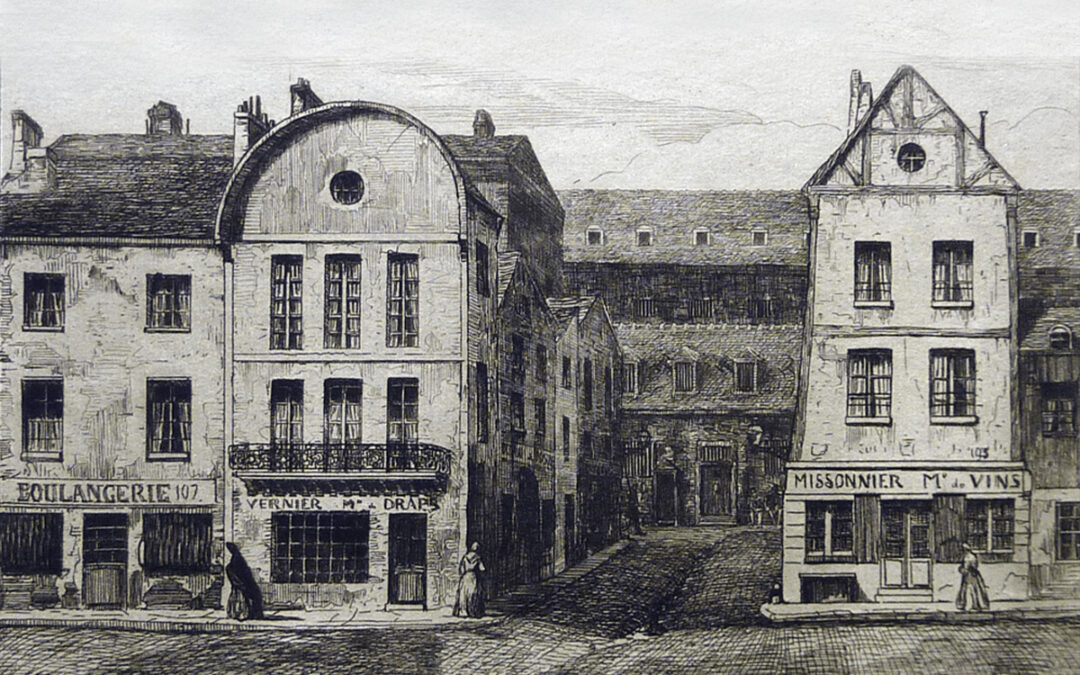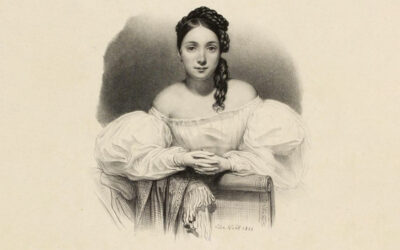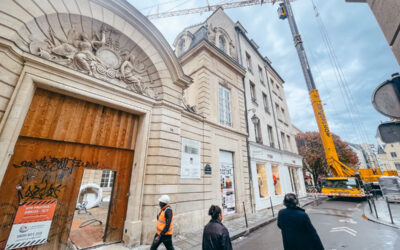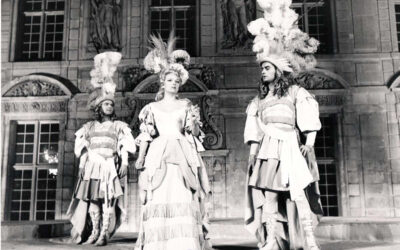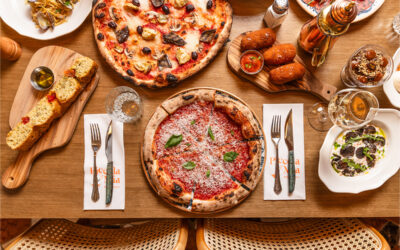Entrance to Force Prison
At the corner of rue Malher and rue Pavée, the attentive passer-by may have noticed a few stones protruding strangely from the wall, as would be left behind by an unfinished construction.
These superimposed blocks with vermiculated decoration are in fact the remains of an infamous place in the Marais: the Force prison, whose buildings went, roughly speaking, from the current historic library of the city of Paris (Hôtel de Lamavoine ) at rue du roi-de-Sicile.
However, the buildings were not always a prison: in the first half of the 1th century, on the contrary, they housed one of the most beautiful private mansions in the district. The Duke of La Force was the owner until 1715; then it was the Pâris brothers, savvy financiers and collectors, who occupied it until 1754. At that date, the State acquired it, with the idea of creating a military school there. Giving up on this project, he ultimately installed various administrations there.
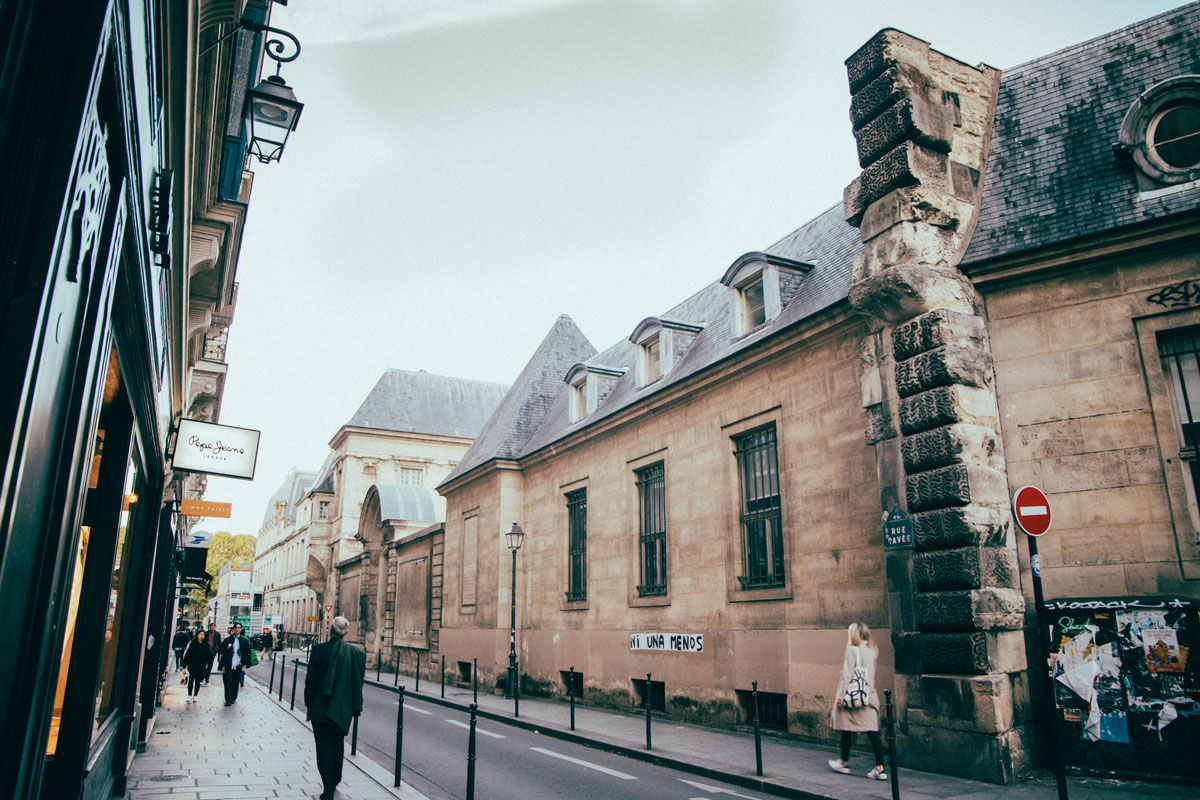
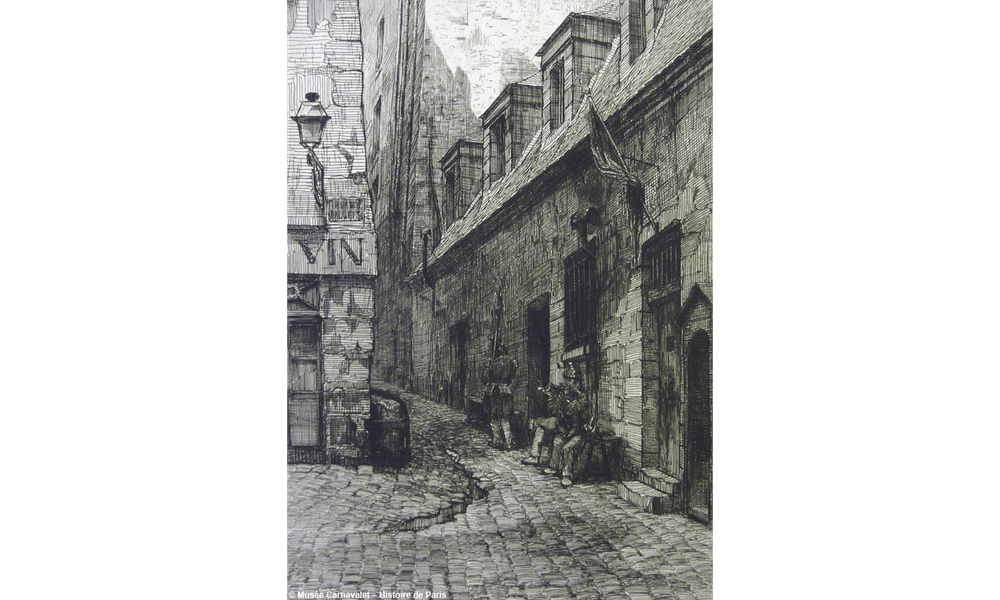
In 1780, a “model prison” was set up in this private mansion, in order to lock up people sentenced to minor sentences in connection with minor offenses (particularly for debts). Furthermore – we are in the Age of Enlightenment, a time when we are interested, among other things, in the conditions of detention in the Crown prisons – these convicts are subjected to a more “comfortable” prison regime than elsewhere. : here, no more dungeons but rooms with four beds, even a fireplace, for the richest; dormitories with mattress beds, blankets and a common heater for the poorest; walk, infirmary and meals for all.
In 1785, the Force expanded. After the annexation and the addition of new buildings to the north, we now distinguish the “Large” from the “Small” Force, the first intended for men, the second for women. These are mainly “public girls”.
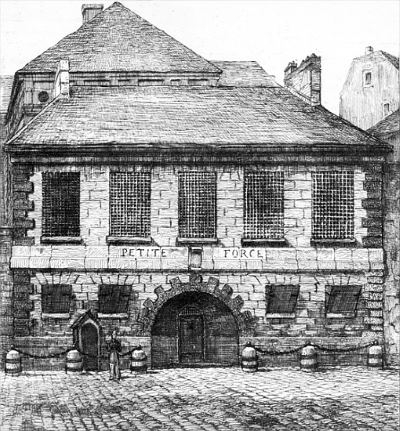
Petite Force Prison
The Force's "greatest hours" were unfortunately also among its most painful: during the Revolution, "suspects", aristocrats, priests, declared or supposed enemies of the regime were locked up there. In 1792, the “September massacres” took place, during which several prisoners were taken from their cells and summarily executed by a worried crowd, inflamed by rumors of royalist plots and the Austro-Prussian invasion.
In La Force, the most famous victim of these massacres is undoubtedly the Princess of Lamballe, superintendent of the Queen's household: savagely decapitated on a marker, in front of the prison door, her head will then be paraded on a pike in the capital, even under the windows of Marie-Antoinette at the Temple.
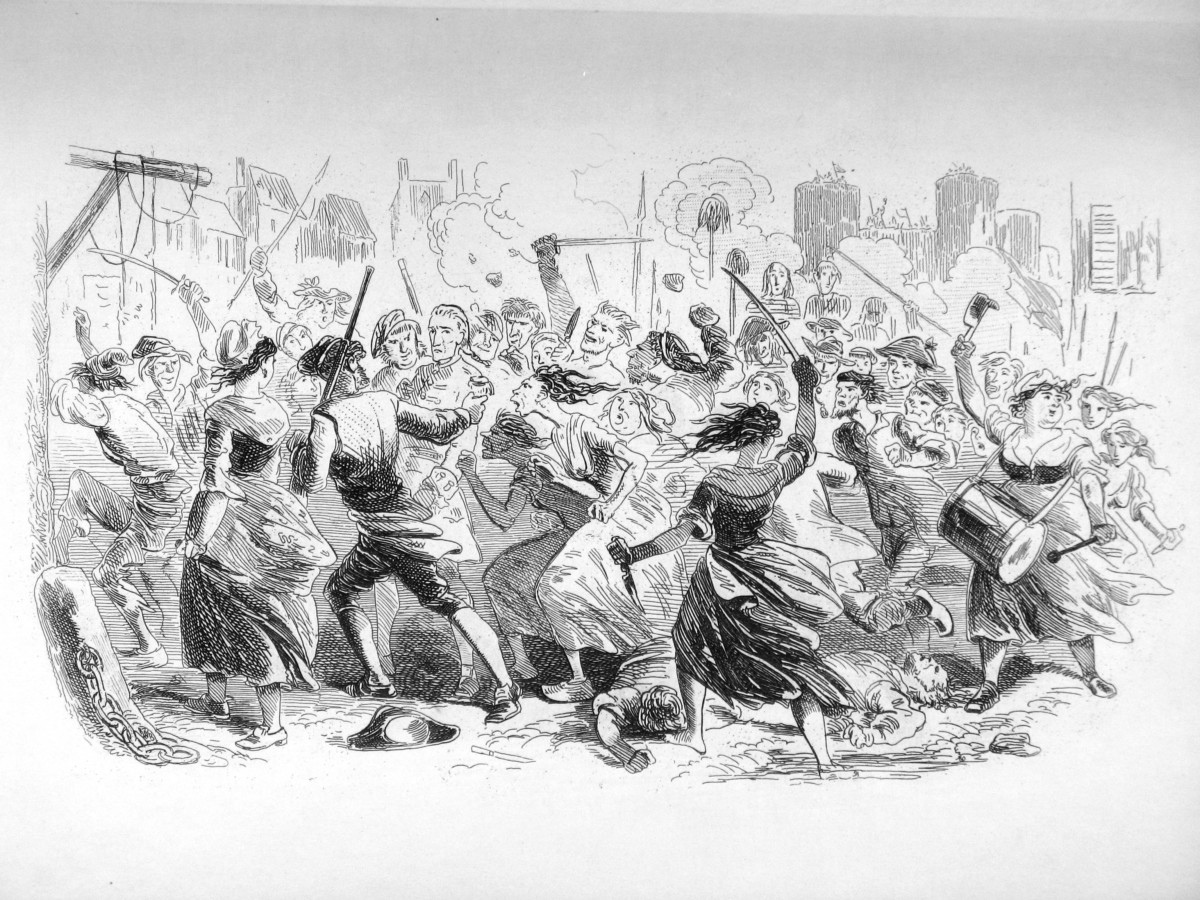
La Force remained a prison until the middle of the XNUMXth century. Obsolete, enclosed in the Marais district, it was finally closed and then destroyed. Instead, rue Malher was opened and the various plots were sold as building land. The majority of buildings that can still be seen today date from this period. However, despite its destruction, the “memory” of the Force remains alive, particularly through literature. We find mention of it in several extremely popular novels: The Mysteries of Paris by Eugène Sue, The Count of Monte Cristo by Alexandre Dumas, Splendeurs et miseries des courtesans by Honoré de Balzac and Les Misérables by Victor Hugo.
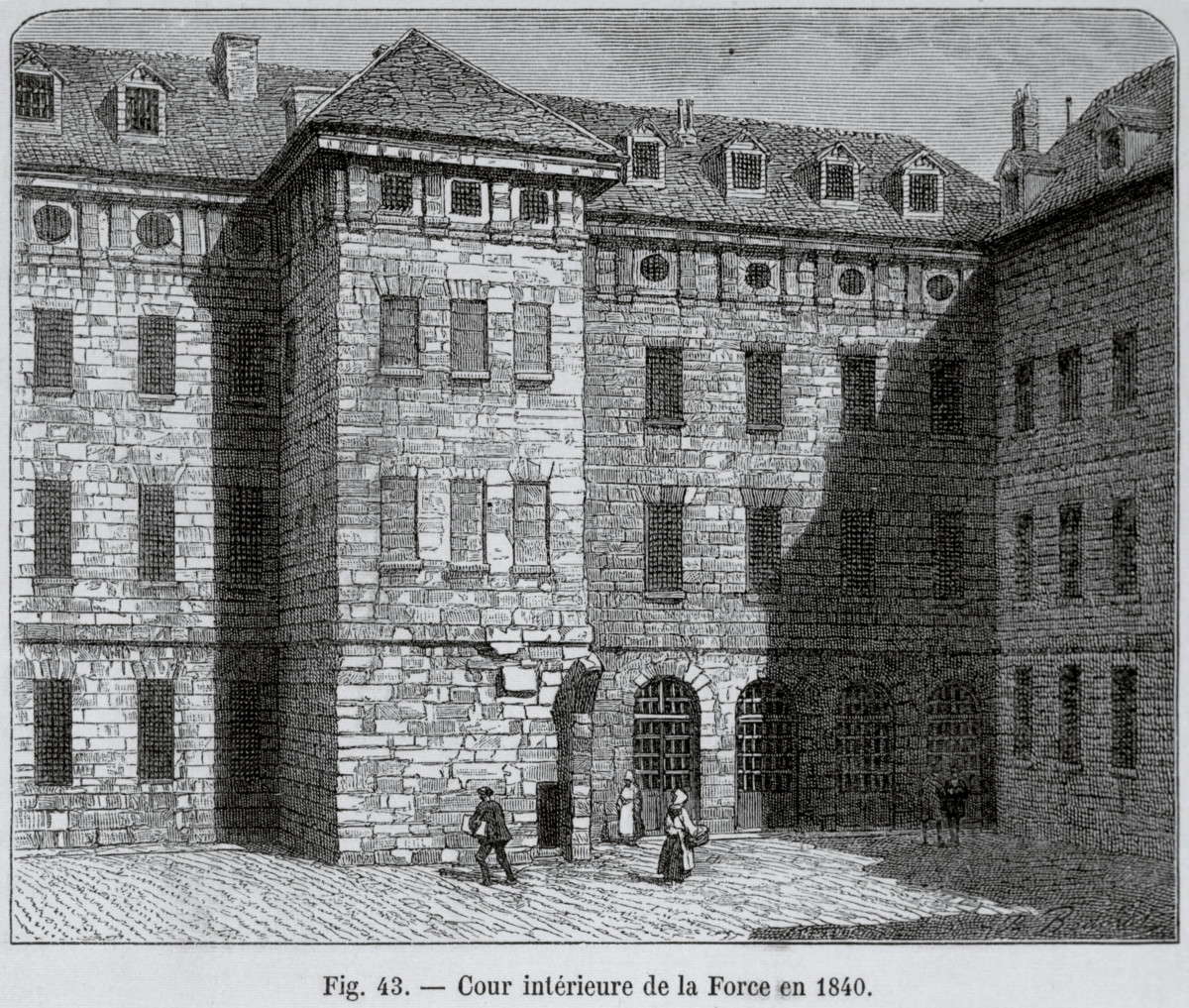
Famous inmates
Jean Sylvain Bailly (1736 – died guillotined on November 12, 1793 in Paris), French mathematician, astronomer, writer and politician, he was the first mayor of Paris.
Pierre Jean de Beranger (1780-1857) was a prolific French singer who achieved enormous success in his time.
auguste blanqui, nicknamed "l'Enfermé" (1805-1881) was a French socialist revolutionary, often wrongly associated with utopian socialists.
Edme-Samuel Castaing (1796 – guillotined on December 6, 1823), was a French doctor and criminal. A famous poisoner, he is considered the first known murderer to kill using morphine.
Louis-Augustin-François Cauchois-Lemaire said Lemaire (1789-1861) is a French political writer and polemicist.
Pierre Choderlos of Laclos (1741-1803) was a career officer who lived through the French Revolution and wrote extensively on a wide variety of subjects. He is best known as the author of the epistolary novel Les Liaisons Dangereuses.
Victor Fanneau de La Horie (1766 – shot on October 29, 1812 in Paris), was a French general.
Évariste Galois (1811-1832) was a French mathematician. His name was given to a branch of mathematics of which he laid the foundations, Galois theory.
Martin Garat, first Baron Garat (1748 – 1830) is a French administrator of the 1810th and XNUMXth centuries, governor of the Bank of France. Garat was described as the bank's "lynchpin" and "founder of the admirable order which reigns in the scriptures" by Governor Jaubert in an XNUMX report.
Pierre-François Lacenaire (1803 – guillotined on January 9, 1836 in Paris), was a French crook and criminal who hit the headlines.
Madame de Lamballe Marie-Thérèse-Louise of Savoie-Carignan, Princess of Lamballe, known as “Mademoiselle de Carignan” or “Madame de Lamballe” (1749-1792) was a princess of the House of Savoy.
Claude-Nicolas Ledoux (1736 – 1806) was a very active French architect, urban planner and utopian from the end of the Ancien Régime, he was one of the main creators of the neoclassical style. Most of its buildings were destroyed in the XNUMXth century.
Simon-Nicolas-Henri Linguet (1736 – guillotined on June 27, 1794 in Paris), was a lawyer, man of letters and landowner, at the same time opposed to the philosophers, the Jansenists and especially to the economic liberalism put in place by the Revolution, the consequences of which he virulently denounced according to disastrous for the working classes.
Aimé Picquet du Boisguy (1776 – 1839) was a French soldier and Chouan general during the French Revolution.
The four sergeants of La Rochelle are young French soldiers, accused under the Restoration of having wanted to overthrow the monarchy and guillotined in Place de Grève on September 21, 1822.
Pierre-Victurnien Vergniaud (1753 – guillotined on October 31, 1793 in Paris with twenty-one other Girondin deputies), French lawyer, politician and revolutionary. He was one of the greatest orators of the Revolution. President on several occasions of the legislative assembly and the national convention, it was he who declared the “fatherland in danger” (speech of July 3, 1792). It was also he who pronounced the suspension of the king on August 10, 1792 and the verdict which condemned Louis XVI to death.
FOR PASSIONATES OFUS
Juliette Drouet actress, muse and mistress of Victor Hugo
At 14 rue Sainte-Anastase, from 1836 to 45 and at 12 from 1845 to 48, a few hundred meters from Place des Vosges, lived the muse and lover of Victor Hugo, Juliette Drouet née Julienne Gauvain.
Rue Vieille-du-Temple: the fabulous construction site restarts
A luxury hotel will be created at the end of the work. On the ground floor, the old stables and carriage houses will house the restaurant on the large courtyard, while the first courtyard, on rue Vieille-du-Temple, will feature two businesses continuing its 19th century layout.
The Marais festival, a fabulous story
The Festival du Marais dates back to a time that those under 60 cannot know. However, this leading artistic event was for a long time one of the most popular cultural events in the capital. For a quarter of a century, from 1962 to 1987, this unique festival…
NOW ON THE MOOD MARSH
The best tattoo parlors in Marais
Tattooing, an age-old practice, has long been the prerogative of convicts, dock workers, the underworld and sailors. Although it has become democratized, now affecting all profiles and concerning one in five French people, including 16% women compared to 10% men, it still remains taboo due to its definitive and transgressive nature.
Juliette Drouet actress, muse and mistress of Victor Hugo
At 14 rue Sainte-Anastase, from 1836 to 45 and at 12 from 1845 to 48, a few hundred meters from Place des Vosges, lived the muse and lover of Victor Hugo, Juliette Drouet née Julienne Gauvain.
Piccola Mia, the pizzas of the Republic
On the Place de la République, a brasserie with Italian accents has just opened, which quickly made people forget the old Pizza Pino. Welcome to Piccola Mia, the fruit of the joyful encounter between Italian chef Denny Imbroisi, pizza chef Julien Serri and mixologist Matthias Giroud who creates a creative cocktail menu.

